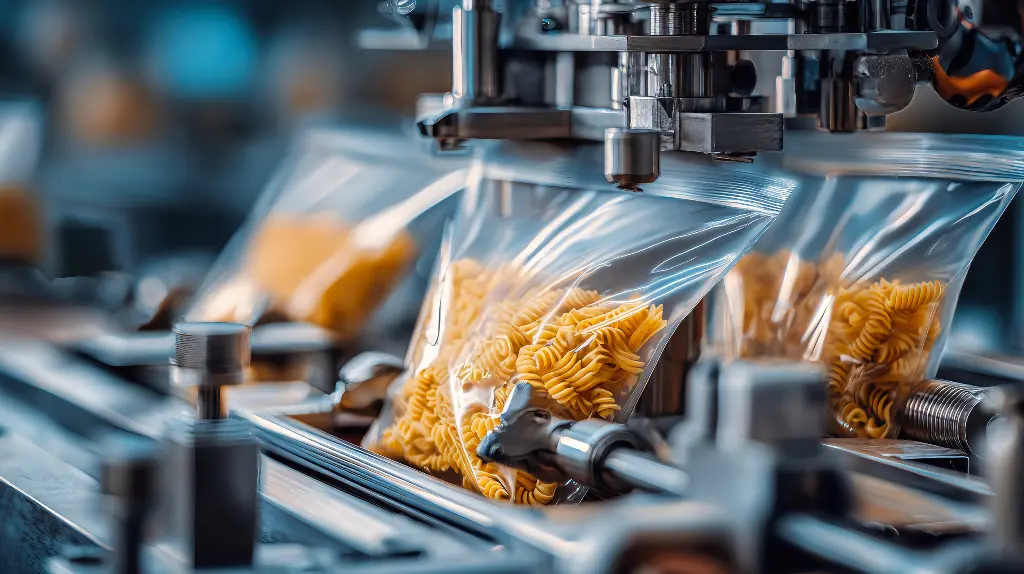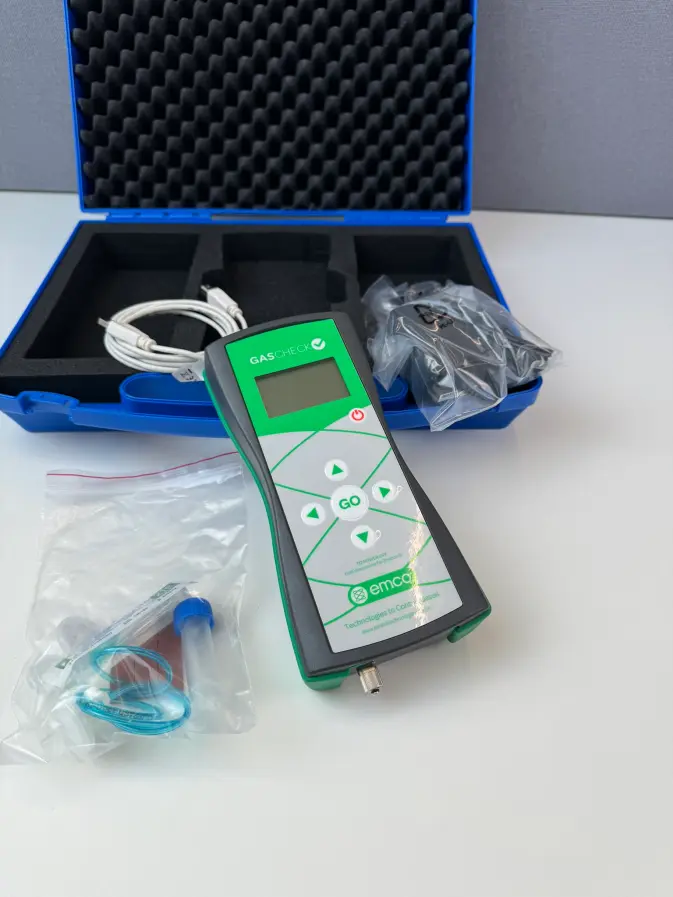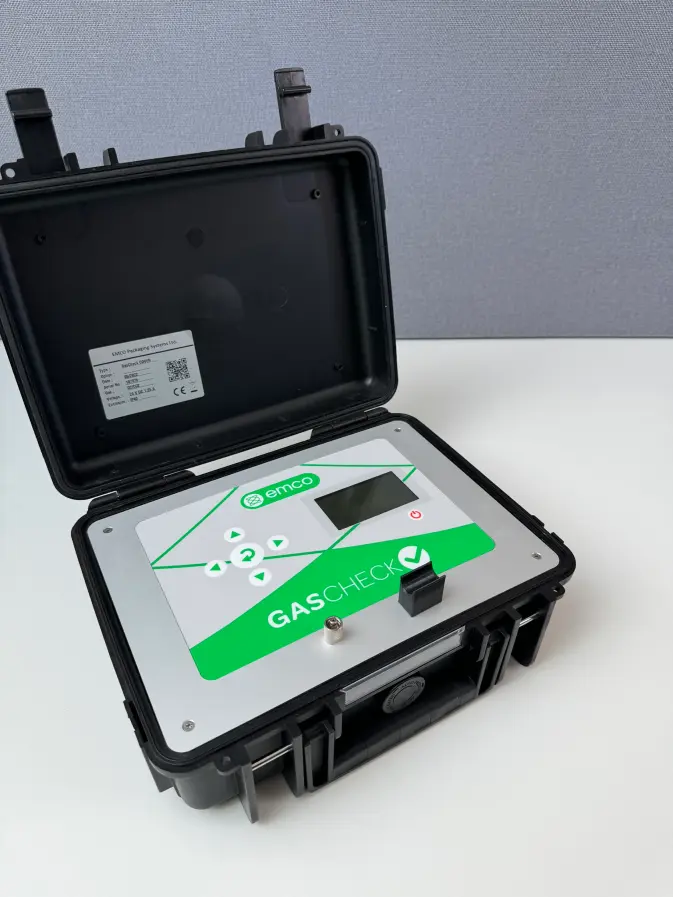Residual Oxygen Meters: How They Work to Improve Product Shelf Life

A product’s shelf life doesn’t depend only on its ingredients or formulation. Packaging plays a critical role. The conditions inside a sealed pack influence how long a product remains safe to use or consume.
Even small shifts in oxygen levels in sealed packaging can affect quality, especially when products need to stay fresh, sterile, or chemically stable.
That’s why measuring and controlling oxygen inside the pack is key to ensuring the product reaches the consumer in optimal condition.
What Is Residual Oxygen and Why Is It a Concern?
Residual oxygen is the small amount of O2 that remains in a package after sealing, even when the surrounding air has been flushed or replaced. It usually collects in the headspace, the space between the product and the packaging’s inner surface.
Oxygen is a highly reactive gas and can trigger oxidation, microbial growth, or degradation, especially in sensitive or sterile products.
Residual oxygen, even in trace amounts, can make the difference between a long shelf life and a spoiled or rejected batch. To prevent this, many industries include oxygen testing in their routine quality control processes.
Where Is Residual Oxygen a Problem?
In many sectors, maintaining a low-oxygen environment is key to protecting product quality and stability.
Food manufacturers widely use modified atmosphere packaging (MAP) to extend shelf life. This method works by replacing a percentage of oxygen with inert gases like nitrogen or carbon dioxide. If residual oxygen remains in the pack, the product can spoil prematurely, discolour, or develop changes in flavour and texture.
In the beverage industry, products like coffee, wine, and beer are especially sensitive to oxidation. Residual oxygen in bottles, capsules, or pods can lead to flavour loss or chemical changes that affect product quality.
In pharmaceuticals and biotech, many formulations degrade when exposed to oxygen, either chemically or microbiologically. Uncontrolled oxygen levels can compromise drug stability, interfere with active ingredients and reduce efficacy, or create conditions unsuitable for sterile products.
Medical devices packaged in sterile barriers can also be affected. Oxygen can support microbial growth or degrade materials over time, especially for implants or single-use equipment with long storage periods.
Across all these sectors, residual oxygen testing plays a role in maintaining product integrity and meeting regulatory requirements.
Benefits of Monitoring Residual Oxygen Levels
Manufacturers can improve product performance and process control by measuring the amount of oxygen left inside sealed packaging.
The most immediate benefit is longer shelf life, especially for products sensitive to oxidation or microbial growth.
In regulated sectors such as food, pharmaceuticals, and medical devices, oxygen measurement also helps ensure compliance with safety and packaging standards, including documentation and validation requirements.
Monitoring O2 levels contributes to greater consistency across production batches by helping detect issues with flushing, sealing, or line setup before they affect a large volume of product.
Beyond technical performance, collecting residual oxygen data over time can improve operational efficiency by optimising equipment settings, refining material choices, or identifying process issues early.
The result is fewer rejected products, less waste, and a more stable packaging process, all of which reduce customer complaints and increase margins.

What Are Residual Oxygen Meters?
Residual oxygen meters and analyzers measure the concentration of oxygen remaining inside sealed packaging.
They’re often used in quality control and process checks to ensure packaging works properly, oxygen levels are within limits, and products stay safe and stable.
The term “meter” typically refers to a compact, handheld or benchtop device designed for quick spot checks or batch sampling. These are often used in lab settings or at-line for routine testing.
An “analyzer” usually describes a more advanced system, often with automated features, integrated sampling tools, or data logging capabilities. Analyzers are used in higher-throughput environments or facilities with strict documentation requirements.
Regardless of format, residual oxygen measurement tools are designed to be easy to use and provide precise readings.
For a breakdown of how different gas meters and analysers compare, read this guide.
How Residual Oxygen Analyzers Work
Residual oxygen meters measure O2 levels by drawing a gas sample from a package’s headspace, usually by piercing the pack wall with a fine needle. The instrument then analyses the sample in real time.
Most residual oxygen analyzers use optical or electrochemical sensor types.
The choice between these depends on how precise the test needs to be, how often it’s carried out, and under what conditions. Both options are reliable, but they differ in speed, accuracy, and maintenance requirements over time.
Optical sensors measure how light interacts with oxygen molecules, often through fluorescence quenching or infrared absorption.
In fluorescence-based systems, the sensor glows when exposed to light. Oxygen reduces this glow, and the amount of reduction shows how much oxygen is present.
In infrared systems, the sensor shines light through the gas and measures how much of it is absorbed. The amount of absorbed light shows how much oxygen is present.
Optical sensors offer fast response times and high accuracy, and they generally require less frequent calibration.
Electrochemical sensors work by letting oxygen into the sensor, which causes a small chemical reaction. This reaction creates a tiny electrical current, and the size of that current shows how much oxygen is present.
Electrochemical sensors are generally more cost-effective but can have a slower response time and require more regular maintenance or replacement, especially in high-throughput environments.
Destructive Testing: The Standard Method
All residual oxygen testing is inherently destructive. To collect a gas sample, manufacturers pierce the pack to draw oxygen from the headspace into the measuring device. Once opened, the package can no longer be used or sold.
Despite being destructive, oxygen testing remains the industry standard for its speed, reliability, and ability to verify sealing effectiveness.
When implemented as part of a consistent sampling routine, it helps monitor packaging integrity and process performance without disrupting production.
To minimise waste, manufacturers typically test a small, representative number of packs from each batch or production run. This sampling strategy allows them to monitor oxygen levels without sacrificing a significant portion of the product.
The number of packs tested varies based on production volume, product type, and regulatory requirements.
Testing Strategies: At-line vs Batch Testing
Residual oxygen can be measured at different stages of the packaging process, depending on production scale, regulatory requirements, and packaging quality assurance goals. The two main approaches are at-line and batch testing.
At-line testing takes place close to the production line, allowing operators to measure oxygen levels in samples immediately after sealing or flushing. This provides rapid feedback on packaging performance. It’s especially useful in high-throughput environments where quick validation helps identify issues early and minimise waste.
Batch testing, by contrast, involves removing individual packs from each production run for analysis at set intervals. This method verifies that sealing and gas flushing are consistent and that oxygen levels remain within specification over time.
The choice between at-line and batch testing depends on production volume, product sensitivity, and the level of process control required. Manufacturers often use both methods to ensure consistent quality.

Choosing The Best Gas Meter or Analyser For Your Company
At EMCO, we help food, drink, and pharmaceuticals manufacturers improve packaging performance, extend shelf life, maintain product quality, and meet regulatory requirements through precise gas measurement and control.
We offer a full range of solutions, including handheld gas meters, benchtop analysers, flow optimisers, and semi-automatic systems for gas, leak, and burst testing. Many of our instruments are custom-built to meet specific production needs and compliance standards.
Today, EMCO equipment is used by global brands in sectors ranging from crisps to coffee at over 400 sites in North America, Europe, and Asia.
We also provide validation kits for routine in-house accuracy checks and a fast recalibration service within 48 working hours. If needed, within mainland UK, we can supply a free loan instrument to keep your process running smoothly.
If you’re exploring options for oxygen measurement, we’re happy to help. Get in touch for guidance on technical specifications, use cases, and selecting the right instrument for your process.
